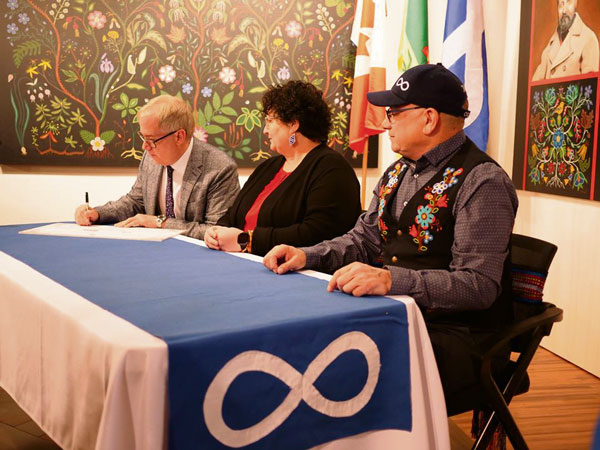
“It’s time that we, as Canadians, begin to work together and accomplish the end result that we need.”
The Métis Nation of Saskatchewan (MN-S) and Canadian Geographic are collaborating to provide the “decisive action” needed to preserve the Michif language.
Through The Future of Michif program, the MN-S and Canadian Geographic are promoting the language and providing accessible resources for people to learn.
Michif—the traditional Métis language—is mainly a combination of Cree and French. According to the country’s most recent census data from 2016, about 640 people living in Canada speak Michif as their first or second language.
One of them is MN-S President Glen McCallum, who’s fluent in both Michif and Cree.
He grew up in a Michif-speaking community, and then learned the Cree language through his mother’s community of Pinehouse Lake.
“When I go to my hometown, I know I belong because I can hear my own language and I can be me,” he said.
McCallum said the province isn’t necessarily losing the language; however, he said “We have to be proactive” in order to see it thrive.
He said plenty of organizations, such as the Gabriel Dumont Institute, are introducing the Métis culture into schools.
“They’ve got elders. They’re actually introducing that to the university classes and some of the elementary schools here in Saskatoon and there’s other areas that are doing it. In Pinehouse, for instance, they do a little bit of Michif,” explained McCallum.
“But we have to be active and we have to be proactive in regards to how can we make a bigger impact by the people that we bring, having it online.”
One aspect of The Future of Michif is a camp-style learning opportunity for Métis youth at the 2020 Back to Batoche Days. It’s free of cost.
“To start, it will be to have somebody communicate some of the words, just a simple ‘hello’ or something. Word of the day was entertained,” he said.
“More importantly (is) to be able to implement (it) on a consistent basis so it’s available for our Métis people to be able to access the language itself and be able to learn it.”
The program also consists of a Michif Language Speakers Bureau to promote and teach Michif and an online Michif language conversation forum on the MN-S website. The Canadian Geographic magazine will feature a story on the language.
McCallum said the magazine was drawn to Saskatchewan because it’s the province where Louis Riel led the fight for Métis rights.
In a news release, Canadian Geographic Enterprises Publisher and Chief Operating Officer, Gilles Gagnier, noted the Indigenous Peoples Atlas of Canada. Canadian Geographic published the book in 2018, which was funded by the federal government.
“Our experience in publishing the Indigenous Peoples Atlas of Canada was instrumental in guiding Canadian Geographic towards and upon its first steps on the path to reconciliation,” says Gagnier.
“We are proud to continue this important journey, in partnership with the Métis Nation – Saskatchewan, as they fulfill the historic dream of Louis Riel in building their nation.”
With media like the Canadian Geographic and the federal and provincial governments—who attended the announcement in Saskatoon on Wednesday—McCallum said the MN-S is getting the attention of the right people.
“It’s time that we, as Canadians, begin to work together and accomplish the end result that we need, especially preserving the language,” he said.
“We’re getting the right people to come on board because we can’t do it alone.”
McCallum said he always makes the effort to speak his traditional language in presentations or opening remarks at meetings. He hopes these steps of action encourage Métis people to learn more about Michif and enjoy doing it.

